In the ever-evolving landscape of kitchen appliances, the rise of ceramic-coated waffle plates has sparked a wave of interest and innovation. As consumers seek healthier, more durable, and aesthetically pleasing options for their homes, the spotlight has turned to these sleek, efficient cooking tools. Join us as we delve into the world of ceramic-coated waffle plates, exploring their benefits, market trends, and the future of this emerging trend in the kitchen appliance market.
The Rise of Ceramic Coated Waffle Plates in the Kitchen Appliance Market
The kitchen appliance market has witnessed a remarkable shift in recent years, with ceramic coated waffle plates emerging as a favorite among consumers. This surge in popularity can be attributed to several factors, each contributing to the rise of these innovative cooking tools.
One of the primary reasons for the growing interest in ceramic coated waffle plates is their superior non-stick properties. Unlike traditional non-stick coatings that can wear off over time, ceramic coatings offer a more durable and reliable surface. This means that users can enjoy perfectly shaped waffles with minimal effort and without the need for excessive oil or butter, making them a healthier choice for those watching their fat intake.
Another key driver is the increasing health consciousness among consumers. With the rise of awareness about the dangers of BPA (bisphenol A), a chemical commonly found in plastics, people are seeking alternatives that are free from harmful substances. Ceramic coated waffle plates fit this bill perfectly, as they are made without BPA, providing a safer option for families and individuals looking to minimize their exposure to potentially toxic materials.
In Europe and North America, the demand for ceramic coated waffle plates has been particularly strong. European consumers are known for their preference for high-quality, durable goods, and ceramic coatings align with these values. North American consumers, on the other hand, are driven by the desire for convenience and health, making ceramic coated waffle plates an appealing choice for busy households.
The design of ceramic coated waffle plates has also played a significant role in their popularity. Modern waffle makers with ceramic coatings often feature sleek, stylish designs that complement contemporary kitchen aesthetics. The glossy finish and the wide range of colors available make these appliances not just functional but also visually appealing, enhancing the overall kitchen decor.
Moreover, the ease of cleaning ceramic coated waffle plates cannot be overstated. The non-stick surface makes it simple to release waffles, and the smooth coating ensures that food particles don’t stick, reducing the need for scrubbing and saving time and effort. This convenience factor is a major draw for consumers who value efficiency in their kitchen appliances.
Manufacturers have also recognized the importance of innovation in this market. New designs include features like adjustable temperature controls, which allow users to achieve the perfect waffle texture every time. Some models even come with removable plates for easy cleaning and storage, further enhancing the user experience.
The market for ceramic coated waffle plates is not without competition. Traditional non-stick waffle makers and those with Teflon coatings still hold a significant market share. However, the perceived health risks associated with Teflon and the longevity of ceramic coatings are pushing more consumers towards the ceramic-coated options.
In terms of sustainability, ceramic coated waffle plates have an edge over their plastic counterparts. They are generally more durable, which means they have a longer lifespan and contribute less to waste. Additionally, the absence of BPA in ceramic coatings aligns with the growing movement towards environmentally friendly products.
As kitchen appliance experts predict, the trend of ceramic coated waffle plates is likely to continue growing. The combination of health benefits, convenience, and aesthetic appeal makes these appliances a compelling choice for consumers. The market is expected to see further innovation, with manufacturers exploring new materials and designs that cater to evolving consumer preferences.
In conclusion, the rise of ceramic coated waffle plates in the kitchen appliance market is a testament to the changing priorities of consumers. As health and sustainability become increasingly important, these appliances are poised to become a staple in many kitchens. The future looks bright for ceramic coated waffle plates, offering a delicious and safe alternative to traditional waffle makers.
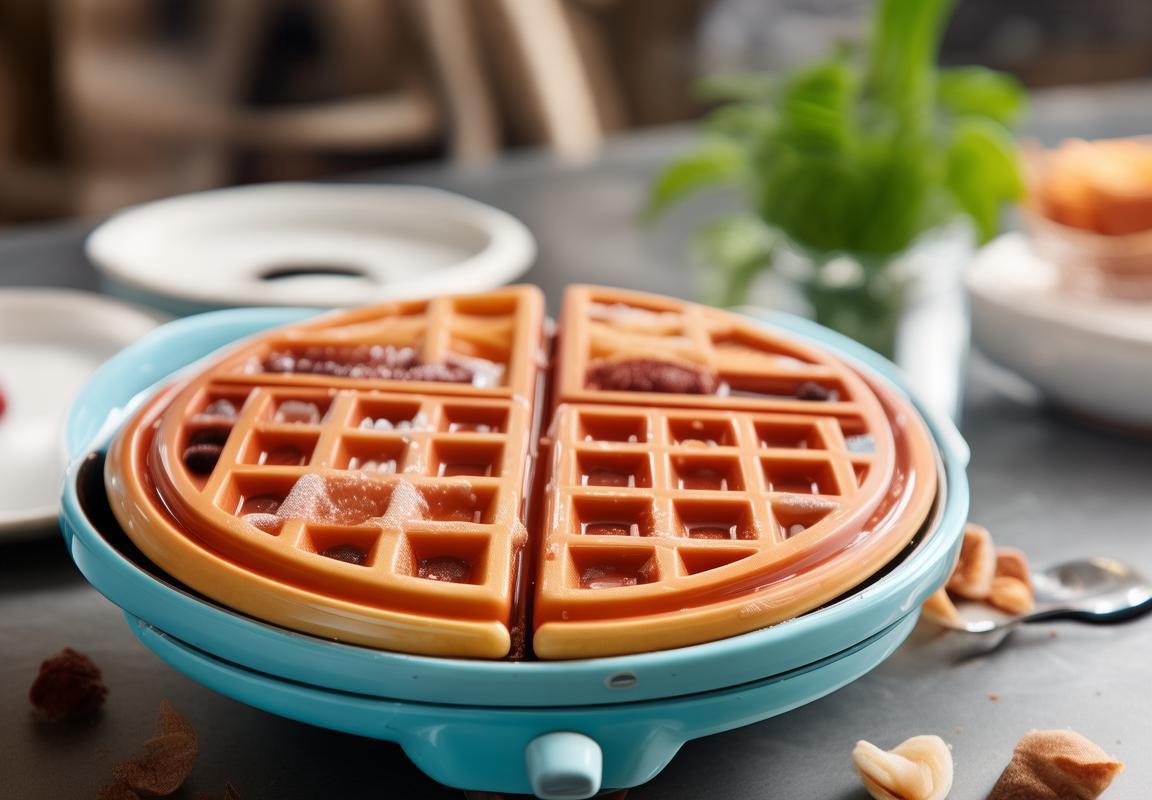
Understanding the Demand for BPA-Free Products
In recent years, the demand for BPA-free products has surged across various industries, and the kitchen appliance market is no exception. Consumers are increasingly aware of the potential health risks associated with bisphenol A (BPA), a chemical commonly found in plastics. This shift in consumer consciousness has led to a growing preference for BPA-free alternatives in everyday items, including kitchenware.
The concern over BPA stems from its ability to mimic estrogen, a hormone that plays a crucial role in the human body. Studies have suggested that exposure to BPA can disrupt endocrine function, potentially leading to various health issues such as reproductive problems, cancer, and cardiovascular diseases. As a result, consumers are actively seeking out products that are free from this controversial chemical.
One of the most noticeable areas where the BPA-free trend has taken hold is in the realm of kitchen appliances. From water bottles to baby bottles, the demand for BPA-free alternatives has expanded to include everything from non-stick cookware to coffee makers. Among these, ceramic-coated waffle plates have emerged as a popular choice due to their health benefits and aesthetic appeal.
Ceramic coatings offer a natural, non-toxic alternative to traditional non-stick coatings, which often contain BPA and other potentially harmful chemicals. The ceramic layer provides a durable, scratch-resistant surface that is safe for use with metal utensils, making it an ideal choice for those who prioritize their health and well-being in the kitchen.
Moreover, the BPA-free label is not just a health consideration; it also appeals to environmentally conscious consumers. Ceramic-coated waffle plates are generally more durable than their plastic counterparts, which means they are less likely to end up in landfills. This eco-friendly aspect of the product is an added incentive for consumers looking to reduce their carbon footprint.
The demand for BPA-free products has also been fueled by the rise of health-focused cooking and baking trends. As more people adopt a healthier lifestyle, they are looking for appliances that align with their values. Ceramic-coated waffle plates not only ensure that the final product is free from harmful chemicals but also provide a healthier cooking surface that is free from the risk of leaching toxic substances into food.
Retailers have responded to this demand by offering a wide range of BPA-free kitchen appliances. Supermarkets, department stores, and online marketplaces are filled with options that cater to the health-conscious consumer. Brands are also investing in marketing campaigns that highlight the BPA-free aspect of their products, emphasizing the health benefits and eco-friendliness.
In the kitchen appliance market, the competition for BPA-free products has spurred innovation. Manufacturers are continuously working to improve the quality and longevity of ceramic coatings, ensuring that their products not only meet but exceed consumer expectations. This has led to the development of new technologies and materials that are not only safe but also provide superior performance.
The demand for BPA-free products is also influenced by regulatory changes. In some regions, governments have implemented strict regulations on the use of BPA in consumer goods, which has further accelerated the shift towards BPA-free alternatives. As these regulations continue to evolve, we can expect to see an even greater emphasis on safety and health in the kitchen appliance market.
For consumers, the choice to purchase BPA-free products is a reflection of their personal values and priorities. Whether it’s for health reasons, environmental concerns, or simply a preference for high-quality, durable goods, the BPA-free movement is reshaping the kitchen appliance market.
In conclusion, the demand for BPA-free products in the kitchen appliance market is a multifaceted trend that encompasses health, environmental consciousness, and consumer values. As awareness of the potential risks associated with BPA grows, it’s likely that this demand will continue to rise, prompting manufacturers to innovate and adapt to meet the needs of health-conscious consumers worldwide.

Market Trends in Europe and North America
In recent years, the kitchen appliance market in Europe and North America has seen a significant shift towards healthier and more eco-friendly products. This trend is particularly evident in the popularity of BPA-free items, reflecting a growing consumer awareness of the potential health risks associated with certain plastics. Let’s delve into the market trends that have propelled the demand for BPA-free products in these regions.
The European market has been at the forefront of adopting regulations that protect consumer health and the environment. Laws such as the Restriction of Hazardous Substances (RoHS) directive have influenced manufacturers to reconsider the materials they use in their products, including kitchen appliances. As a result, ceramic coated waffle plates, being free from BPA and other harmful chemicals, have gained traction among health-conscious consumers.
North America, especially the United States, has followed suit with its own set of regulations. The Food and Drug Administration (FDA) has been proactive in monitoring the use of BPA in consumer goods, leading to a heightened demand for BPA-free alternatives. This demand has been further fueled by the rise of organic and natural living, with consumers seeking products that align with their values.
The European and North American markets have also seen a surge in the use of smart technology in kitchen appliances. This trend has not been limited to high-end products; even mid-range appliances are now incorporating features that allow for better control and customization of cooking processes. Smart waffle makers, for instance, can be connected to mobile devices, offering users the ability to monitor and adjust settings remotely.
In Europe, the preference for energy-efficient appliances is a strong driver in the kitchen appliance market. With rising energy costs and an increasing focus on sustainability, consumers are looking for products that can help them reduce their carbon footprint. BPA-free ceramic coated waffle plates not only meet health and environmental standards but also often come with energy-saving features, making them a popular choice.
The North American market, particularly the U.S., has shown a preference for kitchen appliances that offer convenience and ease of use. This is reflected in the popularity of single-serve appliances, such as single waffle makers, which cater to the busy lifestyles of many Americans. These compact appliances are designed to be BPA-free and are often made with ceramic coatings that ensure even heat distribution for perfect waffles every time.
The demand for personalized cooking experiences has also influenced market trends. Consumers in both Europe and North America are looking for appliances that can cater to various dietary preferences, including gluten-free and vegan options. BPA-free ceramic coated waffle plates have become a staple in many kitchens, as they allow for the creation of a wide range of waffle flavors and textures, from classic Belgian to savory and sweet combinations.
The market for kitchen appliances in Europe and North America has also been influenced by the rise of social media and influencer culture. Consumers are more likely to be influenced by online reviews and demonstrations of products, which has led to a greater emphasis on product quality and aesthetics. BPA-free ceramic coated waffle plates, with their sleek designs and non-stick surfaces, are well-positioned to appeal to this trend.
Another notable trend is the growing interest in sustainable materials. Consumers are not only concerned about the health risks of certain plastics but also about the environmental impact of the products they purchase. Ceramic coated waffle plates, being durable and often recyclable, resonate with consumers who are looking to make more sustainable choices.
Finally, the retail landscape in both Europe and North America has seen a shift towards online sales. With the convenience of shopping from home and the ability to compare products and prices easily, more consumers are turning to online marketplaces for their kitchen appliance needs. BPA-free ceramic coated waffle plates are readily available online, making them even more accessible to the health and eco-conscious consumer.
In summary, the market trends in Europe and North America for kitchen appliances, particularly those made with BPA-free materials like ceramic coatings, are a testament to the changing values and priorities of consumers. As health, sustainability, and technology continue to shape the kitchen appliance market, it’s clear that BPA-free products will remain a key component of the future of kitchenware.
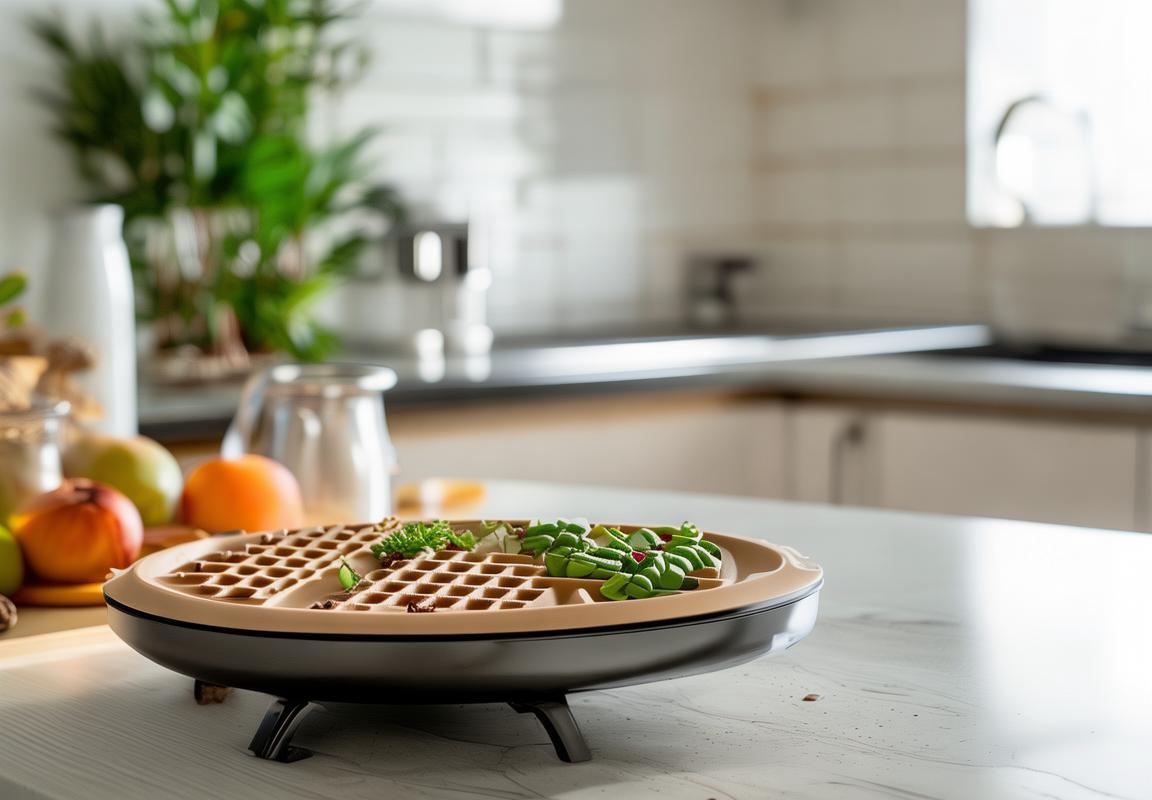
Benefits of Ceramic Coating for Waffle Makers
Ceramic coating has revolutionized the waffle maker market, offering a myriad of benefits that have captivated consumers in search of healthier, more durable, and aesthetically pleasing kitchen appliances. Here’s a closer look at the advantages that ceramic coated waffle makers bring to the table:
Ceramic coating provides a non-stick surface that surpasses traditional non-stick coatings. It creates a smooth, seamless layer that repels food particles, ensuring that waffles and other treats release effortlessly. This reduces the need for excessive butter or oil, making for a healthier waffle experience. The result is a crisp outer texture with a tender interior, all without the hassle of scraping or scrubbing.
The durability of ceramic coating is another standout feature. Unlike PTFE (Teflon), which can degrade over time and release harmful fumes at high temperatures, ceramic coatings are much more resilient. They can withstand extreme heat without losing their non-stick properties, making them ideal for high-heat cooking methods. This longevity means fewer replacements and a more cost-effective cooking tool over time.
The aesthetic appeal of ceramic coated waffle makers cannot be overstated. The glossy, even surface reflects light beautifully, giving kitchen appliances a sleek, modern look. Whether in white, black, or various colors, ceramic coated waffles stand out, enhancing the visual appeal of any kitchen countertop. This design factor has been a significant draw for consumers looking to add a touch of sophistication to their cooking spaces.
Safety is a top priority in kitchen appliances, and ceramic coating addresses this concern effectively. The non-toxic nature of ceramic ensures that no harmful chemicals, like BPA or PTFE, come into contact with food. This is particularly important for those with health sensitivities or individuals looking to minimize their exposure to potentially harmful substances.
Easy cleaning is a common denominator among kitchen appliances, and ceramic coated waffle makers excel in this area. The non-stick surface is not only excellent for cooking but also for cleaning. Food residue simply wipes away with a damp cloth, making post-cooking cleanup a breeze. This convenience is a huge plus for busy individuals or those who prefer minimal maintenance.
One of the most intriguing benefits of ceramic coating is its thermal conductivity. It distributes heat more evenly across the surface, ensuring that every waffle is cooked to perfection with consistent results. This is particularly beneficial for intricate waffle patterns that require uniform heating. The even cooking also means less chance of overcooking or burning, which can occur with uneven heat distribution in other waffle makers.
Another aspect that consumers appreciate is the versatility that ceramic coating brings. Many ceramic coated waffle makers are not just for waffles; they can also be used for a variety of other foods. Whether it’s baking small pancakes, searing meat, or making crispy tortillas, the non-stick surface and heat distribution make these appliances adaptable to different recipes.
The environmental benefits of ceramic coating cannot be ignored. Unlike certain non-stick coatings that are difficult to recycle and can end up in landfills, ceramic is fully recyclable. This sustainable aspect is appealing to eco-conscious consumers who are looking to reduce their carbon footprint and choose products that align with their environmental values.
Lastly, the popularity of ceramic coated waffle makers can also be attributed to their affordability. While they may cost a bit more upfront than some traditional models, the long-term savings in terms of maintenance, durability, and the ability to use the appliance for various tasks make them a cost-effective choice for many families.
In summary, the benefits of ceramic coating for waffle makers are numerous. From their non-stick properties and durability to their aesthetic appeal and environmental friendliness, these appliances are a smart choice for any kitchen. The combination of health, convenience, and sustainability offers a compelling case for why ceramic coated waffle makers are becoming a staple in the kitchen appliance market.
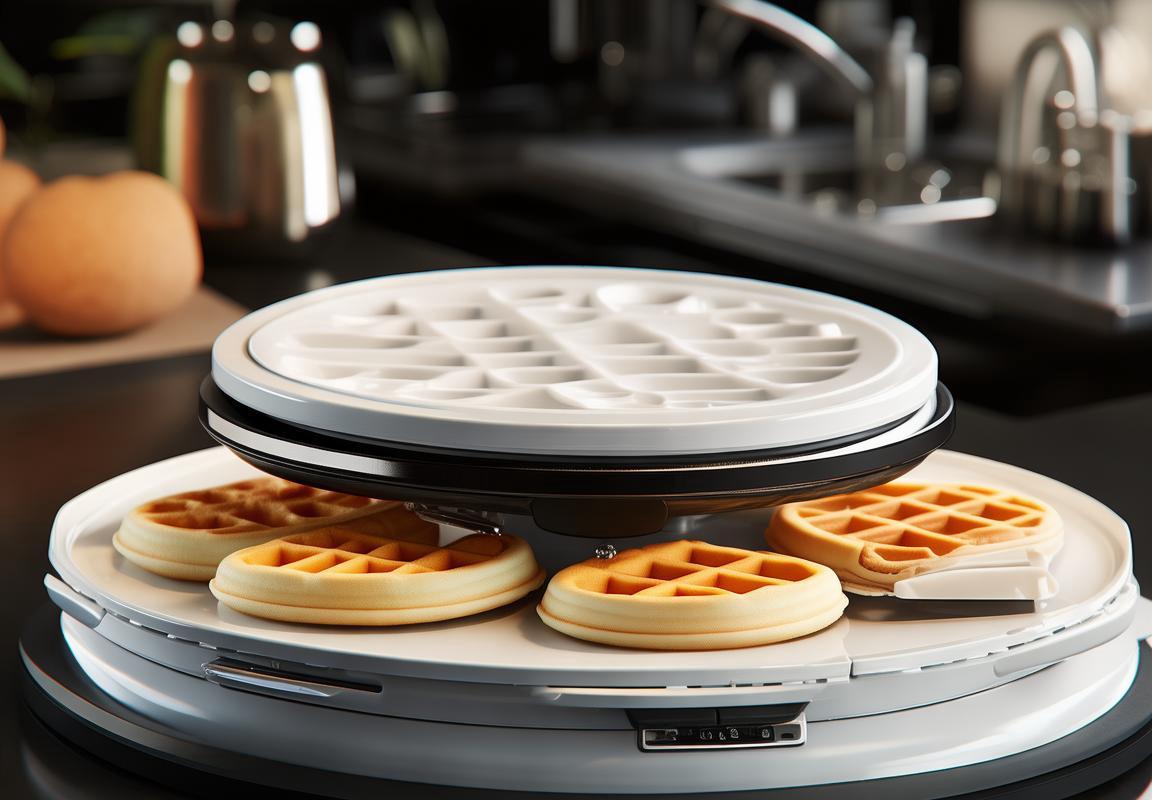
Consumer Preferences and Health Concerns
In today’s health-conscious world, consumer preferences are increasingly leaning towards products that not only enhance the culinary experience but also cater to their well-being. This shift is particularly evident in the kitchen appliance market, where the demand for health-friendly options like BPA-free ceramic-coated waffle plates has surged. Let’s delve into the various factors influencing these consumer choices and the health concerns that drive them.
Health concerns have become a paramount consideration for many consumers when it comes to kitchenware. The fear of harmful chemicals leaching into food is a prevalent worry, and this has led to a significant rise in the popularity of BPA-free products. BPA, or bisphenol A, is a chemical commonly found in plastics and has been linked to various health issues, including hormonal disruption and increased risk of certain cancers.
As awareness of these potential risks grows, consumers are gravitating towards alternatives that offer peace of mind. Ceramic-coated waffle plates, for instance, provide a non-toxic, PFOA-free (perfluorooctanoic acid) and PTFE (polytetrafluoroethylene) free surface, which is a significant draw for those looking to minimize exposure to harmful substances.
One cannot overlook the role of social media and influencers in shaping consumer preferences. With platforms like Instagram and TikTok, health enthusiasts and culinary experts have been instrumental in spreading the word about the benefits of ceramic-coated waffle plates. These influencers often share their experiences and recipes, emphasizing the health advantages and delicious outcomes that these plates offer.
Another factor contributing to the popularity of ceramic-coated waffle plates is the growing trend towards home cooking. As people spend more time at home, they are investing in kitchen appliances that not only perform well but also align with their values. The health benefits of ceramic-coated surfaces, combined with the convenience of waffle-making, make these products an attractive choice for families and individuals alike.
In addition to health concerns, the aesthetic appeal of ceramic-coated waffle plates cannot be underestimated. The sleek, modern look of these appliances complements any kitchen decor, from rustic to contemporary styles. Consumers are not just buying a waffle maker; they’re investing in a piece of kitchenware that enhances their home’s aesthetic and reflects their personal taste.
The versatility of ceramic-coated waffle plates also plays a role in their appeal. These plates can be used for a variety of recipes, not just waffles. They are suitable for cooking a range of foods, from pancakes to hash browns, thanks to their even heat distribution and non-stick surface. This versatility allows consumers to maximize their investment in kitchen appliances, as they can use the same plates for multiple dishes.
Moreover, the durability of ceramic coatings is a significant advantage. These coatings are known for their resistance to scratching and chipping, which means that they can withstand frequent use without losing their effectiveness. This durability is a crucial factor for consumers who want to invest in long-lasting kitchenware that can withstand the test of time.
The eco-conscious consumer is also drawn to ceramic-coated waffle plates. The sustainable nature of ceramic materials aligns with the growing movement towards environmental responsibility. By choosing ceramic-coated waffle plates, consumers are not only making a health-conscious choice but also contributing to a greener planet.
Lastly, the convenience factor cannot be overlooked. With ceramic-coated waffle plates, the cleaning process is straightforward, and the ease of maintenance is a major selling point. Consumers appreciate the ability to quickly and efficiently clean their appliances without the need for harsh chemicals or excessive scrubbing.
In conclusion, consumer preferences and health concerns have converged to create a demand for products like ceramic-coated waffle plates. The combination of health benefits, aesthetic appeal, versatility, durability, eco-friendliness, and convenience makes these waffle makers a compelling choice for many consumers. As health consciousness continues to rise and kitchenware evolves, it’s likely that ceramic-coated waffle plates will remain a staple in modern kitchens.
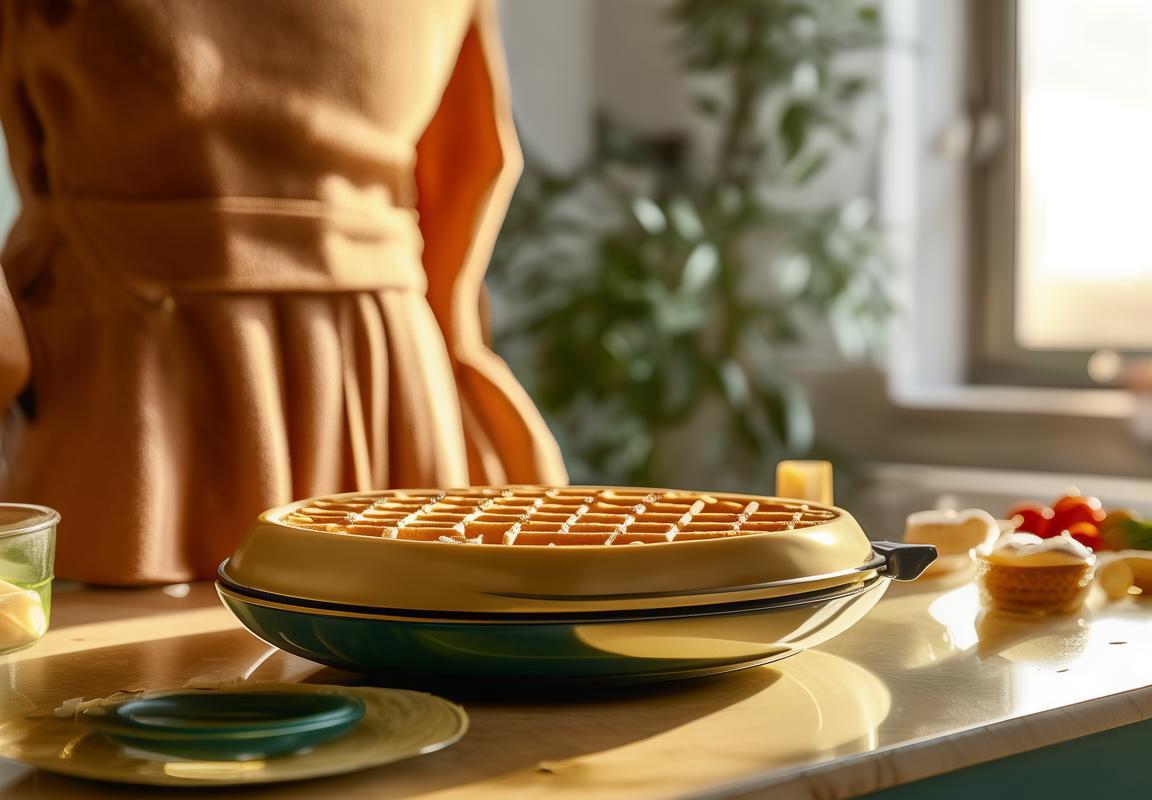
Innovations in Waffle Plate Design
The evolution of waffle plates has been marked by a series of innovations that cater to both aesthetic appeal and functional efficiency. These advancements have not only enhanced the user experience but have also contributed to the popularity of ceramic-coated waffle makers. Here’s a closer look at some of the key innovations in waffle plate design:
-
Non-Stick Surfaces: One of the most significant innovations in waffle plate design has been the development of non-stick coatings. These coatings, often made from ceramic materials, ensure that the waffles release effortlessly, reducing the need for excessive oil or butter. This not only simplifies the cleaning process but also adds to the health benefits of enjoying waffles without the added fat.
-
Enhanced Heat Distribution: Modern waffle plates are designed to distribute heat more evenly across the surface. This even heat distribution is crucial for achieving a perfectly crispy outside and a tender inside. The use of advanced materials and heating elements has significantly improved the consistency of waffle quality.
-
Unique Patterns and Styles: Waffle plates now come in a variety of patterns and styles, each designed to create unique waffle shapes and textures. From classic diamond patterns to intricate floral designs, these variations cater to the personal tastes of consumers. Some plates even feature interchangeable patterns, allowing users to switch up their waffle designs with ease.
-
Easy-to-Read Controls: Innovations in the design of waffle plates include user-friendly controls that are easy to read and understand. Digital displays and intuitive buttons have replaced the old-fashioned dials, making it simpler for users to set the desired temperature and cooking time. This not only enhances the cooking experience but also ensures that waffles are cooked to perfection every time.
-
Compact and Portable Designs: The demand for convenience has led to the creation of compact and portable waffle makers. These designs are perfect for those who want to enjoy waffles on the go or in smaller kitchen spaces. The plates fold or detach, making storage and transportation a breeze.
-
Integrated Functions: Some waffle plates now come with integrated functions that go beyond just making waffles. Features like defrost settings, programmable timers, and even built-in toasters have become common. These multifunctional capabilities make waffle makers more versatile kitchen appliances.
-
Safety Features: Modern waffle plates are equipped with safety features that protect users from accidents. Automatic shut-off functions prevent overcooking and reduce the risk of fires. Some models also have cool-touch handles and non-slip bases to ensure a safer cooking environment.
-
Customizable Cooking Options: Innovations in waffle plate design have also allowed for more customizable cooking options. Users can now choose between different browning levels, adjust the temperature settings, and even lock in the waffle shape for a consistent result each time.
-
Smart Technology Integration: In recent years, smart technology has started to make its way into kitchen appliances, including waffle makers. Wi-Fi connectivity and smartphone apps allow users to remotely control their waffle makers, set timers, and even monitor the cooking process from afar.
-
Eco-Friendly Materials: As awareness of environmental issues grows, manufacturers are focusing on using eco-friendly materials in the production of waffle plates. From sustainable woods for handles to recycled plastics for the body, these innovations are making waffle makers more environmentally conscious.
These innovations in waffle plate design reflect the ever-evolving needs and preferences of consumers. From health and convenience to style and technology, the waffle maker has become a versatile and indispensable kitchen appliance, thanks to the creative minds behind its design.
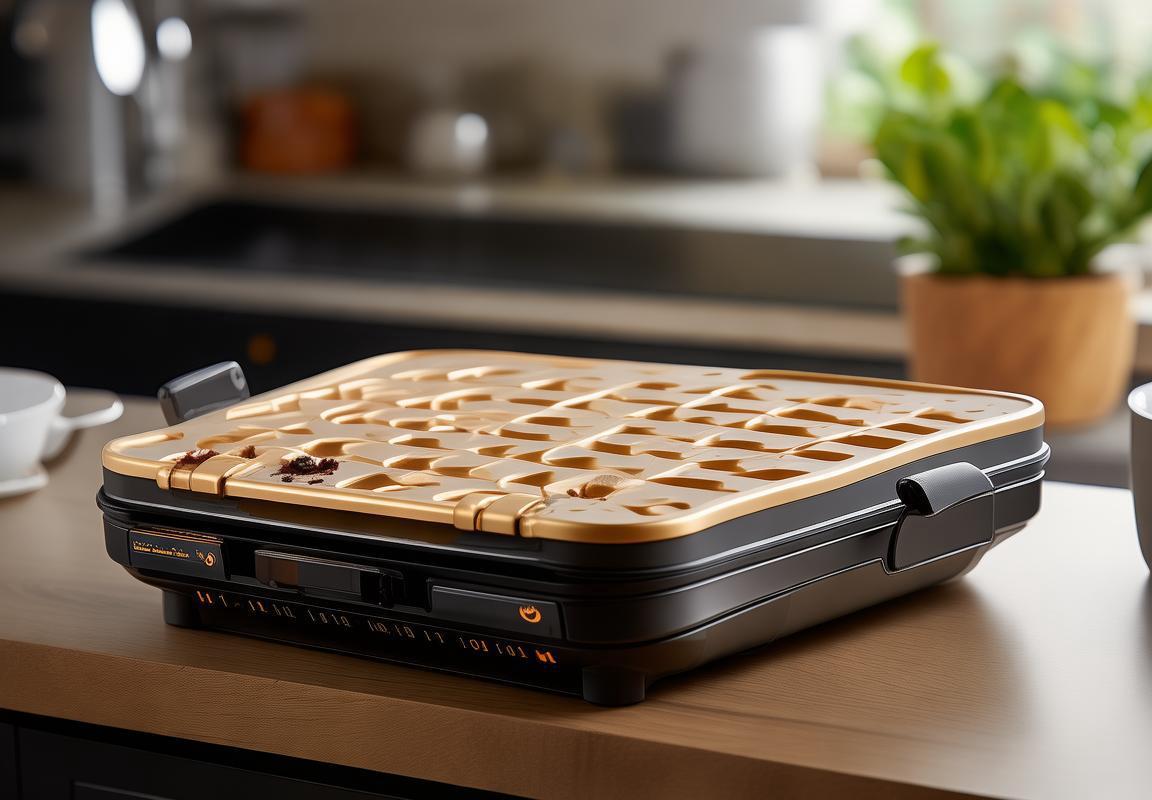
Comparative Analysis of Ceramic Coated vs. Traditional Waffle Makers
Ceramic-coated waffle makers have gained significant popularity in recent years, challenging the traditional non-stick models. To understand the appeal of these new innovations, let’s delve into a comparative analysis of ceramic coated vs. traditional waffle makers.
The non-stick coating on traditional waffle makers is often made from a chemical compound called polytetrafluoroethylene (PTFE), commonly known as Teflon. While Teflon is durable and effective for non-stick properties, it has come under scrutiny due to concerns over its potential to release harmful fumes when overheated. Ceramic coatings, on the other hand, offer a more natural alternative that addresses these concerns.
One key advantage of ceramic coatings is their non-toxic nature. Unlike Teflon, ceramic coatings do not contain harmful chemicals that can leach into food. This makes ceramic-coated waffle makers a healthier choice for consumers who are wary of potential contaminants. The ceramic surface is also more scratch-resistant, ensuring that the non-stick properties are maintained for a longer period.
When it comes to ease of cleaning, ceramic-coated waffle makers are often praised for their performance. The smooth, non-porous surface of ceramic is highly resistant to staining and sticking, making it easier to remove residue and clean the plates. This is in contrast to traditional non-stick surfaces, which can develop scratches and grooves over time, harboring food particles and making cleaning more of a challenge.
Another important factor to consider is the heat distribution. Ceramic-coated waffle makers are designed to provide even heat across the entire surface of the plate, which is crucial for creating consistently golden-brown waffles with perfect patterns. Traditional non-stick waffle makers, while also capable of even heat distribution, may not always maintain their performance over time due to wear and tear.
Durability is a significant aspect that separates ceramic-coated waffle makers from their traditional counterparts. The ceramic coating is applied at a molecular level, which means it bonds directly to the metal surface of the waffle maker. This bond creates a much harder and more resilient surface that can withstand repeated use without wearing down. Traditional non-stick coatings, while durable, can degrade with use, potentially leading to a loss of non-stick properties.
In terms of aesthetics, ceramic-coated waffle makers offer a sleek and modern look. The ceramic coating comes in various colors and finishes, allowing consumers to choose a model that complements their kitchen decor. This visual appeal is often a deciding factor for those looking for a kitchen appliance that not only performs well but also enhances the overall aesthetic of the kitchen space.
Price is another point of comparison. Ceramic-coated waffle makers can be slightly more expensive than traditional non-stick models, but many consumers are willing to pay a premium for the peace of mind that comes with a non-toxic, durable, and easy-to-clean product. The longevity of ceramic-coated waffle makers can offset the initial higher cost, as they often last longer than traditional waffle makers.
Safety is a paramount concern in kitchen appliances, and ceramic-coated waffle makers have made strides in this area. The ceramic coating has a higher melting point than Teflon, reducing the risk of harmful fumes being released when the waffle maker is overheated. This is particularly reassuring for those who are sensitive to chemicals or have family members who might be affected by such emissions.
Maintenance is a critical aspect that often goes overlooked in kitchen appliance purchases. Ceramic-coated waffle makers require minimal maintenance, as the non-stick properties mean that they are less likely to need scraping or scrubbing to remove stuck-on food. This not only saves time but also reduces the wear and tear on the appliance.
In conclusion, the comparative analysis of ceramic coated vs. traditional waffle makers highlights several key advantages of the ceramic-coated models. From health concerns to ease of use, durability, and aesthetic appeal, ceramic-coated waffle makers are emerging as a favorite choice for consumers who value both performance and safety in their kitchen appliances. As the market continues to evolve, it’s likely that we’ll see more innovations that build upon the strengths of ceramic coatings and further improve the waffle-making experience.
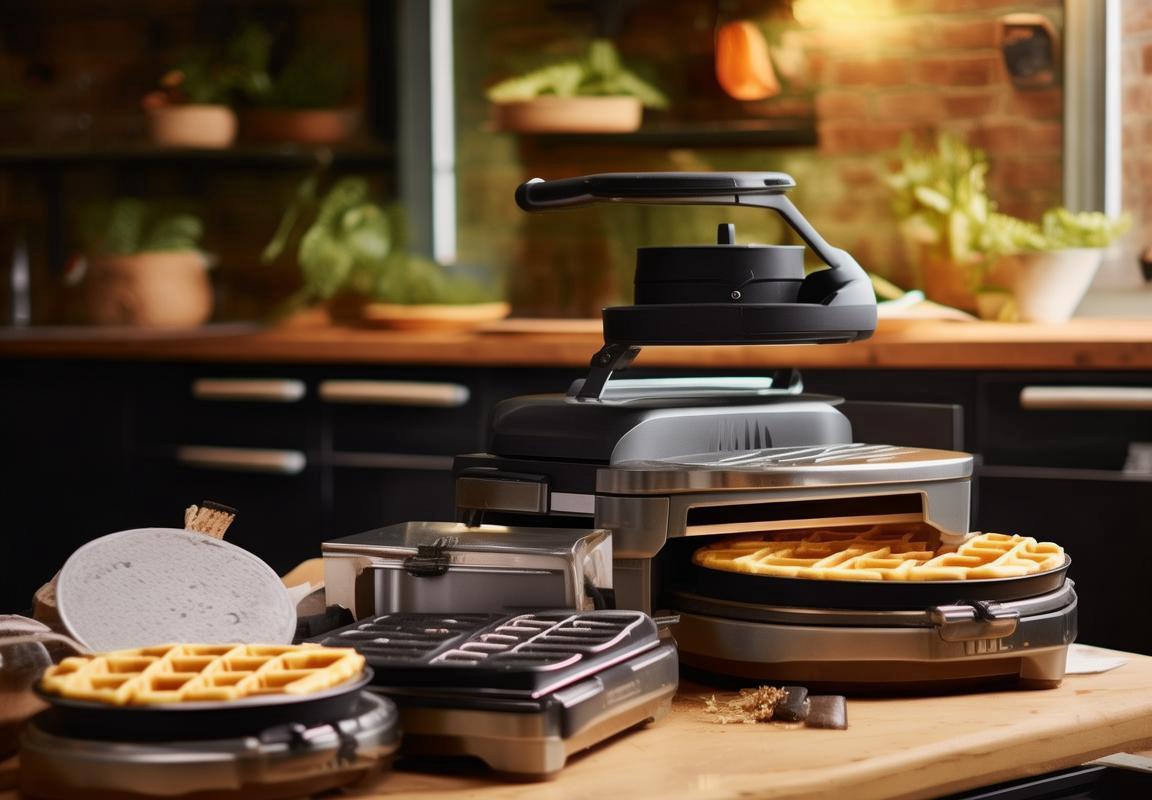
Sustainability and Environmental Impact
In today’s world, sustainability and the environmental impact of consumer products are at the forefront of many consumers’ minds. This is especially true for kitchen appliances like waffle makers. Let’s delve into the sustainability and environmental considerations surrounding these devices.
The production of ceramic-coated waffle makers, for instance, involves fewer harmful chemicals and processes compared to traditional non-stick coatings. Traditional non-stick waffle makers often use PTFE (polytetrafluoroethylene) and PFOA (perfluorooctanoic acid) coatings, which are not only harmful to human health but also to the environment. When these coatings are heated to high temperatures, they can release toxic fumes and particles into the air, contributing to air pollution.
On the other hand, ceramic coatings are considered a more eco-friendly alternative. They are made from natural, non-toxic minerals that are baked onto the surface of the waffle maker. This means that there are no harmful chemicals that can leach into the food or the atmosphere during cooking. Moreover, ceramic-coated waffle makers tend to have a longer lifespan than their non-stick counterparts, reducing the need for frequent replacements and further cutting down on waste.
The materials used in the construction of waffle makers also play a significant role in their environmental impact. Many ceramic waffle makers are designed with recycled metals and sustainable materials, making them more sustainable from the ground up. This contrasts with some traditional waffle makers that may use metals and plastics derived from non-renewable resources.
Energy efficiency is another crucial aspect of sustainability. Modern ceramic-coated waffle makers often come with advanced heat control features that reduce energy consumption. These features not only save money on electricity bills but also reduce the overall carbon footprint of the appliance.
Recycling and disposal are also significant considerations. When a waffle maker reaches the end of its life, it’s important that it can be recycled or disposed of in an environmentally friendly manner. Ceramic-coated waffle makers are generally easier to recycle since they don’t contain the same level of chemical contaminants found in traditional non-stick appliances.
However, there are challenges. The production of ceramic waffle makers may require higher temperatures and energy during the manufacturing process, which can have a negative impact on the environment. Despite this, the long-term benefits of using a ceramic-coated waffle maker, including reduced reliance on harmful chemicals and less frequent replacements, can outweigh the initial manufacturing costs.
Transportation also contributes to the environmental impact. Waffle makers, regardless of their coating material, are heavy items that require energy to ship. Companies that prioritize sustainability are increasingly looking into carbon-neutral shipping options, such as using renewable energy sources for their transportation fleets.
Another important aspect is the use of packaging. Sustainable packaging options, like recycled paper or biodegradable materials, are becoming more common for waffle makers and other kitchen appliances. These choices reduce waste and minimize the appliance’s environmental impact before it even reaches the consumer.
In the realm of customer care, manufacturers are also considering the end of life of their products. Some offer take-back programs where consumers can return their old waffle makers for proper recycling. This not only encourages responsible disposal but also provides valuable feedback on product lifespan and durability.
In conclusion, the sustainability and environmental impact of waffle makers are multifaceted. While ceramic-coated waffle makers offer a host of benefits, it’s essential to consider the entire lifecycle of the product, from manufacturing to disposal. As consumers become more aware of these factors, we can expect to see further innovations and improvements in the sustainability of kitchen appliances.
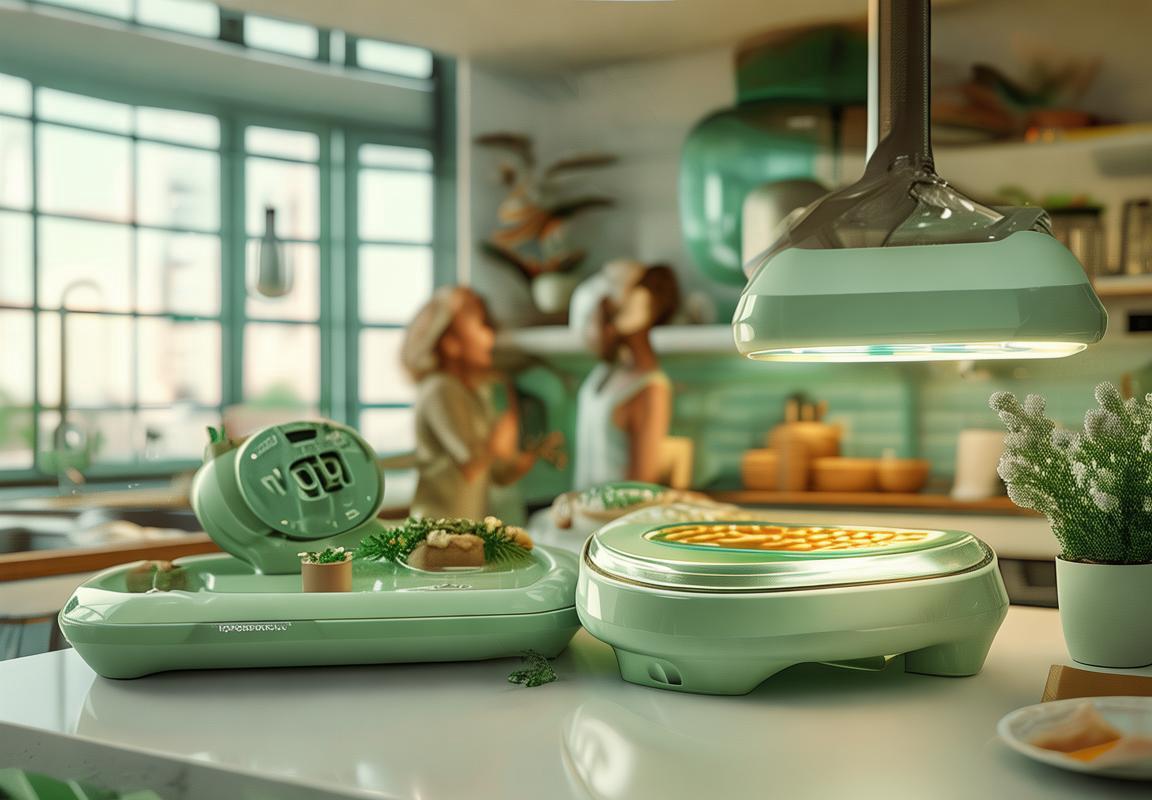
Expert Insights: Predictions for the Future of Ceramic Coated Waffle Plates
In the ever-evolving kitchen appliance market, ceramic coated waffle plates have emerged as a popular choice among consumers. As we look ahead, experts weigh in on the future trajectory of these innovative waffle makers. The integration of smart technology, eco-friendly materials, and enhanced user experiences are some of the key predictions shaping the landscape of ceramic coated waffle plates.
Smart IntegrationOne of the most significant trends expected to define the future of ceramic coated waffle plates is the incorporation of smart technology. As homeowners seek appliances that can seamlessly integrate into their smart homes, waffle makers with Wi-Fi capabilities and smartphone apps are poised to become the norm. These devices could offer features like remote operation, recipe customization, and even predictive maintenance, ensuring that users get the perfect waffle every time.
Eco-Friendly MaterialsWith growing environmental consciousness, the use of eco-friendly materials in ceramic coated waffle plates is a prediction that resonates with many experts. Biodegradable plastics and recycled metals are just a couple of the materials that could be used to reduce the carbon footprint of these appliances. As consumers become more aware of the environmental impact of their purchases, manufacturers are likely to respond by offering greener alternatives.
Enhanced User ExperiencesThe future of ceramic coated waffle plates is also expected to focus on enhancing the user experience. This could include features like non-stick surfaces that are even more durable and easier to clean, as well as plates with multiple designs and patterns to cater to different culinary preferences. Experts suggest that the emphasis will be on making the waffle-making process more enjoyable and less time-consuming for the consumer.
Health and SafetyAnother crucial aspect that experts foresee will play a major role in the future of ceramic coated waffle plates is health and safety. As consumers become more health-conscious, they will seek out appliances that are free from harmful substances like BPA. The continued development of ceramic coatings that are BPA-free and safe for use in cooking will be a key factor in the market’s growth.
Customization and PersonalizationPersonalization is a trend that’s not just limited to technology but also to kitchen appliances. The future of ceramic coated waffle plates may see a rise in customizable options, allowing users to choose the size, shape, and pattern of their waffles. This could be achieved through interchangeable plates or even digital printing technology that allows users to create their own designs.
Global Market ExpansionExperts also predict that the market for ceramic coated waffle plates will expand globally. As the health benefits and convenience of these appliances become more widely recognized, they are likely to gain traction in markets outside of Europe and North America. This international expansion could be driven by increased tourism, cultural exchange, and the globalization of food trends.
Market Saturation and CompetitionDespite the projected growth, experts caution that the market for ceramic coated waffle plates may face challenges such as market saturation and increased competition. As more manufacturers enter the space, differentiation will become key. Brands that can offer unique features, superior quality, and exceptional customer service are expected to stand out.
Innovation in Manufacturing ProcessesInnovation in manufacturing processes is another area that could influence the future of ceramic coated waffle plates. As companies look to reduce costs and improve efficiency, advancements in ceramic coating technology could lead to more affordable and accessible waffle makers. This could potentially open up the market to a broader demographic.
Consumer Education and AwarenessLastly, experts highlight the importance of consumer education and awareness. As the market for ceramic coated waffle plates grows, it will be crucial for manufacturers to educate consumers about the benefits of these products. By promoting the health and environmental advantages, as well as the ease of use, manufacturers can ensure that consumers make informed choices.
In conclusion, the future of ceramic coated waffle plates is bright, with a focus on smart technology, sustainability, and enhanced user experiences. As the market evolves, it will be interesting to see how these predictions unfold and what new innovations will shape the landscape of kitchen appliances in the years to come.
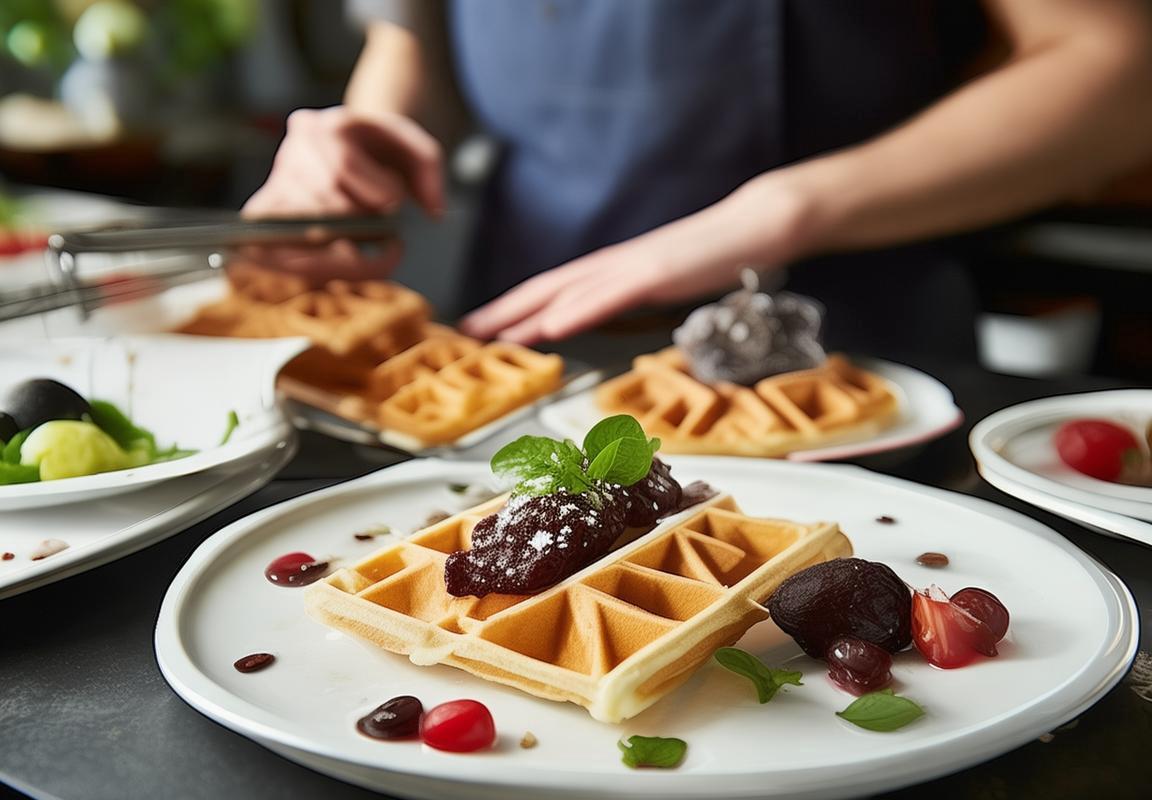
Final Thoughts: Embracing Healthier and More Stylish Kitchen Appliances
In the ever-evolving kitchen appliance market, consumers are increasingly seeking healthier and more stylish options that not only enhance their culinary experience but also align with their lifestyle choices. The integration of modern technology and eco-friendly materials has led to a surge in demand for kitchen appliances that are not only functional but also aesthetically pleasing and sustainable. From sleek designs to health-conscious features, here’s a closer look at why these kitchen appliances are becoming a favorite among homeowners.
The shift towards healthier living is palpable in the kitchen, with appliances like ceramic coated waffle makers gaining popularity. These appliances are not just about making a delicious breakfast; they’re about promoting a healthier lifestyle by offering alternatives to non-stick coatings that contain potentially harmful chemicals. As people become more health-conscious, they are gravitating towards products that promise a better, cleaner cooking experience.
Stylish kitchen appliances are not just about looks; they’re about making a statement. The design of kitchenware reflects personal taste and the desire for a cohesive, modern aesthetic. For instance, the sleek, minimalist look of ceramic coated waffle makers complements contemporary kitchen decor, adding a touch of sophistication. The demand for such appliances is driven by a desire to create an inviting and visually appealing kitchen space.
The convenience factor cannot be overstated when it comes to kitchen appliances. Modern appliances are designed to simplify tasks, saving time and effort. From touch screen controls to programmable settings, these devices cater to the busy lifestyle of today’s consumer. The combination of health, style, and convenience is a powerful trifecta that kitchen appliance manufacturers are leveraging to meet consumer needs.
As the kitchen becomes the hub of family life, the importance of appliances that encourage family bonding cannot be ignored. Features like built-in timers or countdown functions on smart ovens can turn cooking into a family activity, fostering a sense of togetherness. The kitchen is no longer just a place to prepare meals; it’s a gathering spot for shared experiences and conversations.
Safety is another crucial aspect that manufacturers are focusing on. With advancements in technology, appliances are becoming more intuitive and safer to use. For example, smart kitchen appliances with child locks or anti-scalding technology provide peace of mind for busy parents. The integration of these safety features addresses consumer concerns and builds trust in the product.
Eco-friendliness is also a key driver in the kitchen appliance market. Consumers are becoming more environmentally conscious, and manufacturers are responding by offering appliances that are energy-efficient and made from sustainable materials. Appliances with LED lighting, programmable settings to minimize energy use, and parts that can be recycled or repurposed are becoming the norm.
The kitchen is no longer just a place for cooking; it’s a multifunctional space where relaxation, entertainment, and even work can take place. This shift has led to the development of appliances that offer additional functionalities. For instance, some waffle makers now come with integrated toasters or sandwich presses, making them a versatile addition to any kitchen.
The rise of social media has also played a significant role in shaping consumer preferences. With influencers and bloggers showcasing their kitchen setups and cooking techniques, there’s a strong trend towards buying appliances that are as photogenic as they are practical. The desire to have a kitchen that doubles as a showcase space has spurred innovation in design and functionality.
In terms of material trends, we’re seeing a move away from traditional metals and plastics to more natural elements. Ceramics, glass, and wood are becoming popular choices for their aesthetic appeal and durability. These materials not only enhance the visual appeal of the kitchen but also offer a sense of warmth and texture that complements modern design sensibilities.
The integration of technology into kitchen appliances continues to push the boundaries of what’s possible. Smart appliances that can be controlled via smartphone apps are becoming increasingly common. This connectivity not only allows for remote monitoring and control but also enables appliances to learn and adapt to the user’s habits over time, creating a more personalized cooking experience.
The kitchen appliance market is also reflecting a growing trend towards customization. Consumers are looking for appliances that can be tailored to their specific needs and preferences. Whether it’s a waffle maker with customizable plate sizes or an oven that can be programmed for various cooking methods, the focus is on creating solutions that cater to individual tastes.
In conclusion, the kitchen appliance market is responding to a complex array of consumer preferences and health concerns. The rise of ceramic coated waffle plates and other health-conscious appliances is just one part of a larger movement towards healthier, more stylish, and sustainable kitchen solutions. As these trends continue to evolve, the kitchen will become a space where technology, aesthetics, and functionality come together to enhance our daily lives.